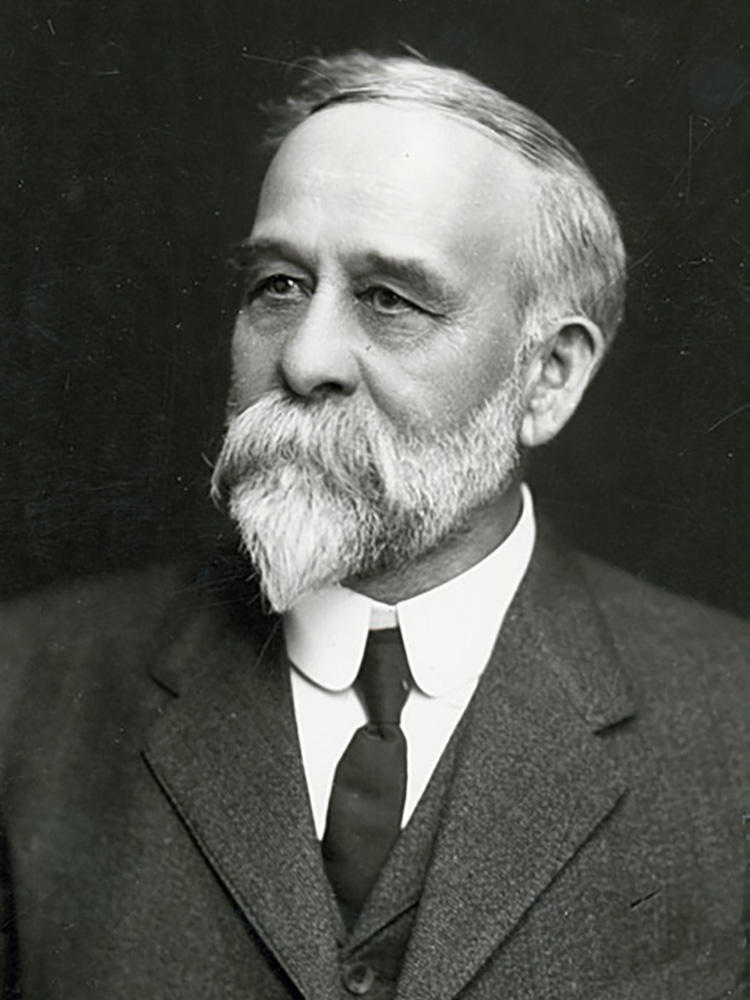Charles Edwin Bessey

Chancellorship Dates
July 1, 1888 - June 30, 1891
Degrees
- B.S., Michigan Agricultural College (Michigan State University), 1869
- M.S., Michigan Agricultural College (Michigan State University), 1872
- Honorary Ph.D. in Philosophy, University of Iowa, 1879
Born
May 21, 1845 - Milton Township, Wayne County, OhioDied
February 25, 1915 - Lincoln, NebraskaInterment
Wyuka Cemetery, (plot unknown; likely Section 7, Lot 6025 or 6026)Artifacts
- Bessey Hall, University of Nebraska
- Nebraska National Forest, Bessey Ranger District, Charles E. Bessey Tree Nursery
- UNL Women's Club (Lucy Bessey)
Sources
Charles Bessey, professor of botany and dean of the Industrial College, was first chosen as acting chancellor after Irving Manatt's departure in 1888. He served until the summer of 1891, and again from summer 1899 to 1900 between the chancellorships of MacLean and Andrews. Because of the duration of his interim leadership of the university and the fact he was asked to lead not once but twice, Bessey is considered the fourth chancellor of the University of Nebraska.
Bessey was born and raised on a farm in northern Ohio. In 1866, he entered the freshman class at Michigan Agricultural College (now Michigan State University) and graduated in November 1869. When Bessey entered college, he intended to return home to follow the profession of civil engineering or surveying. One area of study in particular piqued his interest during his university education: the systematic examination of the plants of the fields and forests. He was advised by his professors to specialize in botany. Immediately after graduation, Bessey was awarded an assistantship in horticulture and was placed in charge of the college greenhouse.
In December 1869, he accepted the offer of an instructorship in botany and horticulture at the Iowa State College of Agriculture at Ames (now Iowa State University). He took part in the first Farmers' Institute held in Iowa in 1870 and 1871. In 1872, he received the degree of master of science from Michigan Agricultural College and was promoted to a full professorship at Ames. In 1879, the University of Iowa conferred the degree of doctor of philosophy upon Bessey in recognition of his publications in botany and a partial reward for what he had already accomplished for the state of Iowa.
In 1884, after initial hesitation, Bessey accepted the offer to become professor of botany at the University of Nebraska. As soon as he arrived, he began to collect data with reference to Nebraska grasses and the other plants of the state and organized the first series of Farmers' Institutes with governor Robert Furnas.
In Bessey’s time, higher education was undergoing a shift from narrow recitation and memorization of textbook materials, to lectures, where a professor synthesized and discussed subject material from numerous sources, to seminars, where professors involved students as near-equals in the examination and discussion of knowledge. Bessey’s Seminarium Botanicum, shorted by the students to “Sem. Bot.” became one of the most celebrated of these arrangements. One 1896 Sem. Bot. photograph shows Bessey surrounded by 10 students; among this number was a later dean of Harvard Law (Roscoe Pound), a president of the University of Maryland (Albert F. Woods), the founder of the academic discipline of ecology (Frederick Clements), the founding dean of the University College of Medicine, later the University of Nebraska Medical Center (Henry Ward), and a world-renowned entomologist (Lawrence Bruner).
Bessey's crowning scientific honor came at the Minneapolis meeting of the American Association for the Advancement of Science in 1910-11, when he was elected its president. Bessey was one of the pioneers who did much to lay the foundation of American botany.